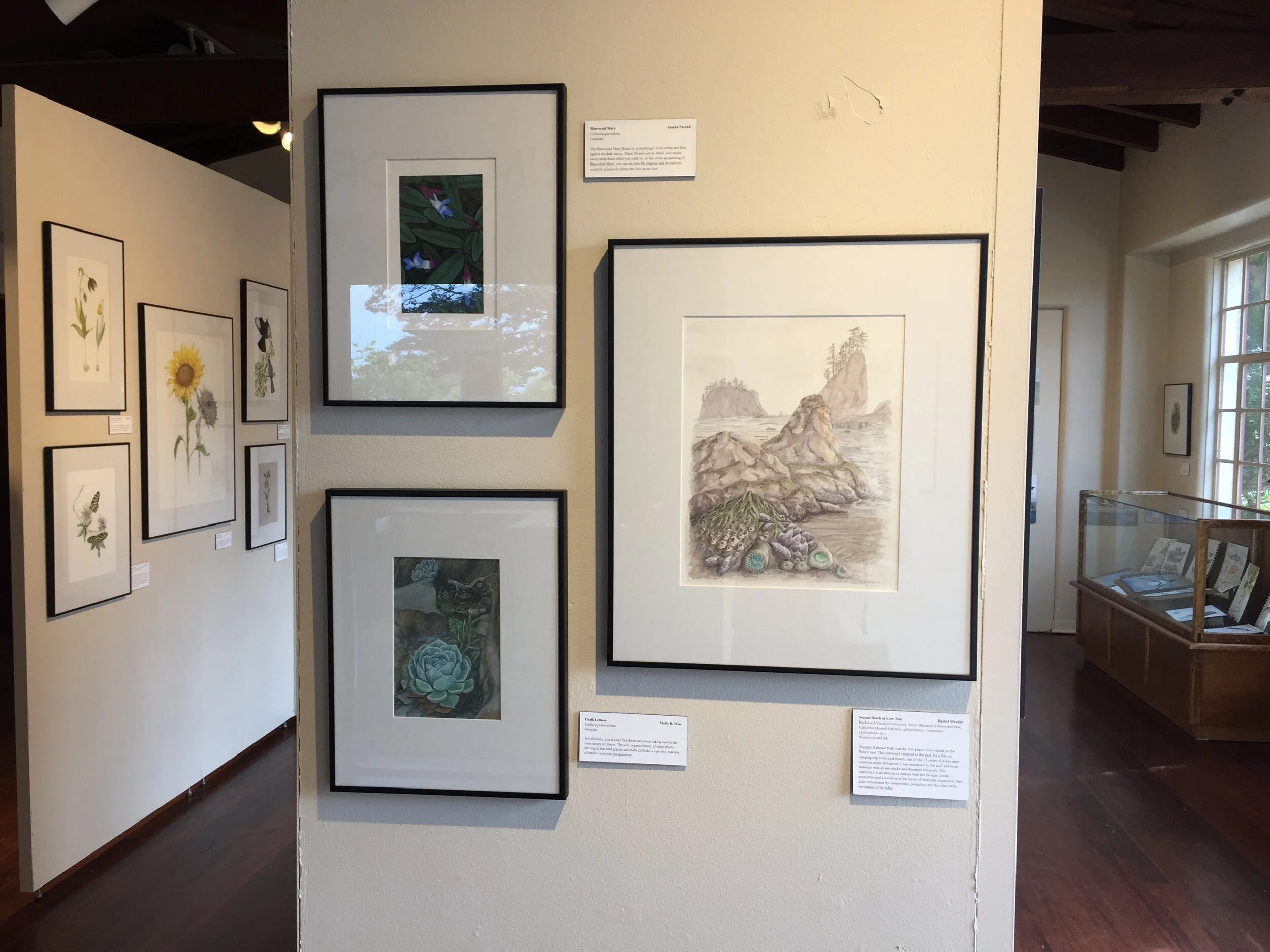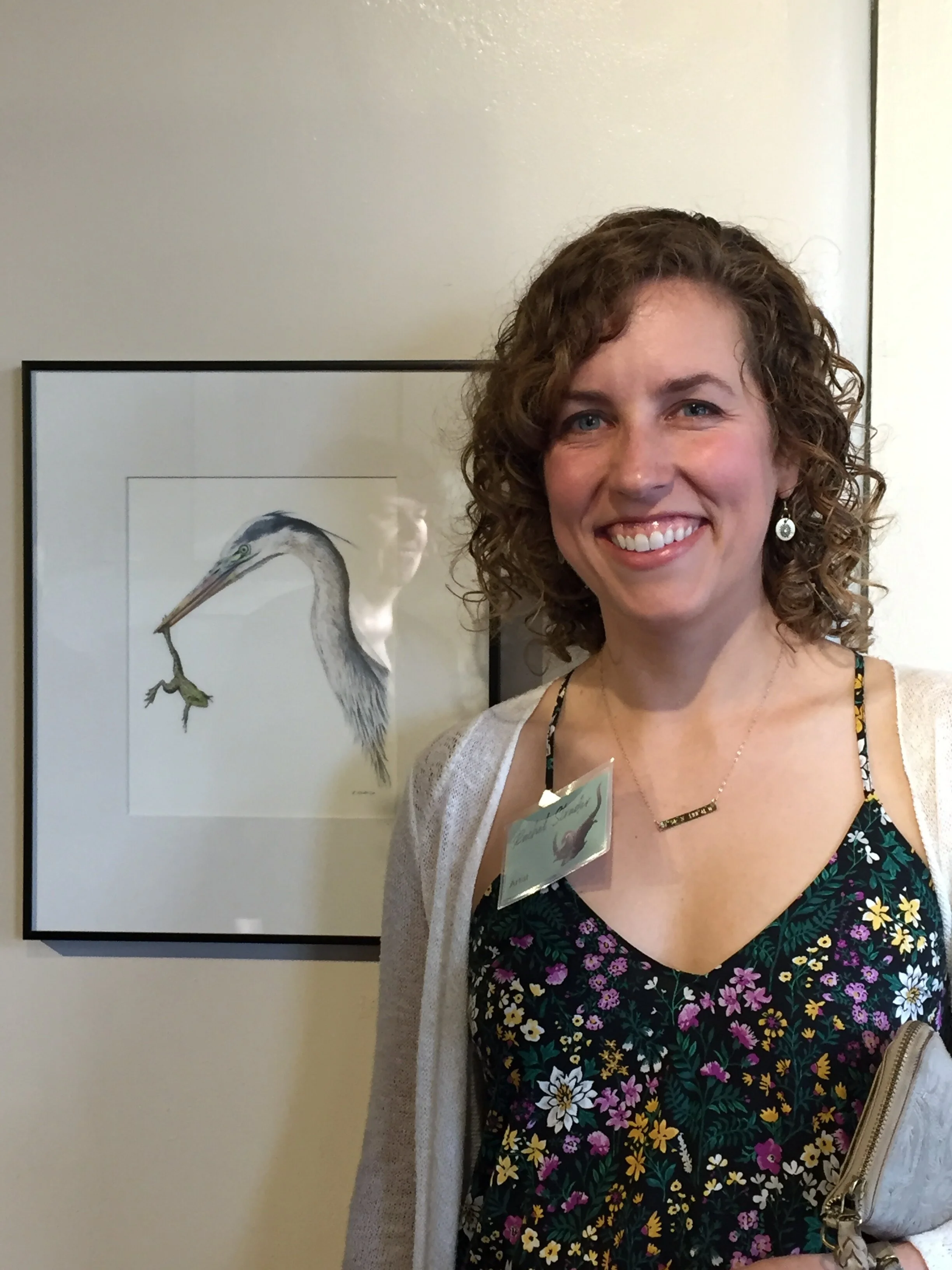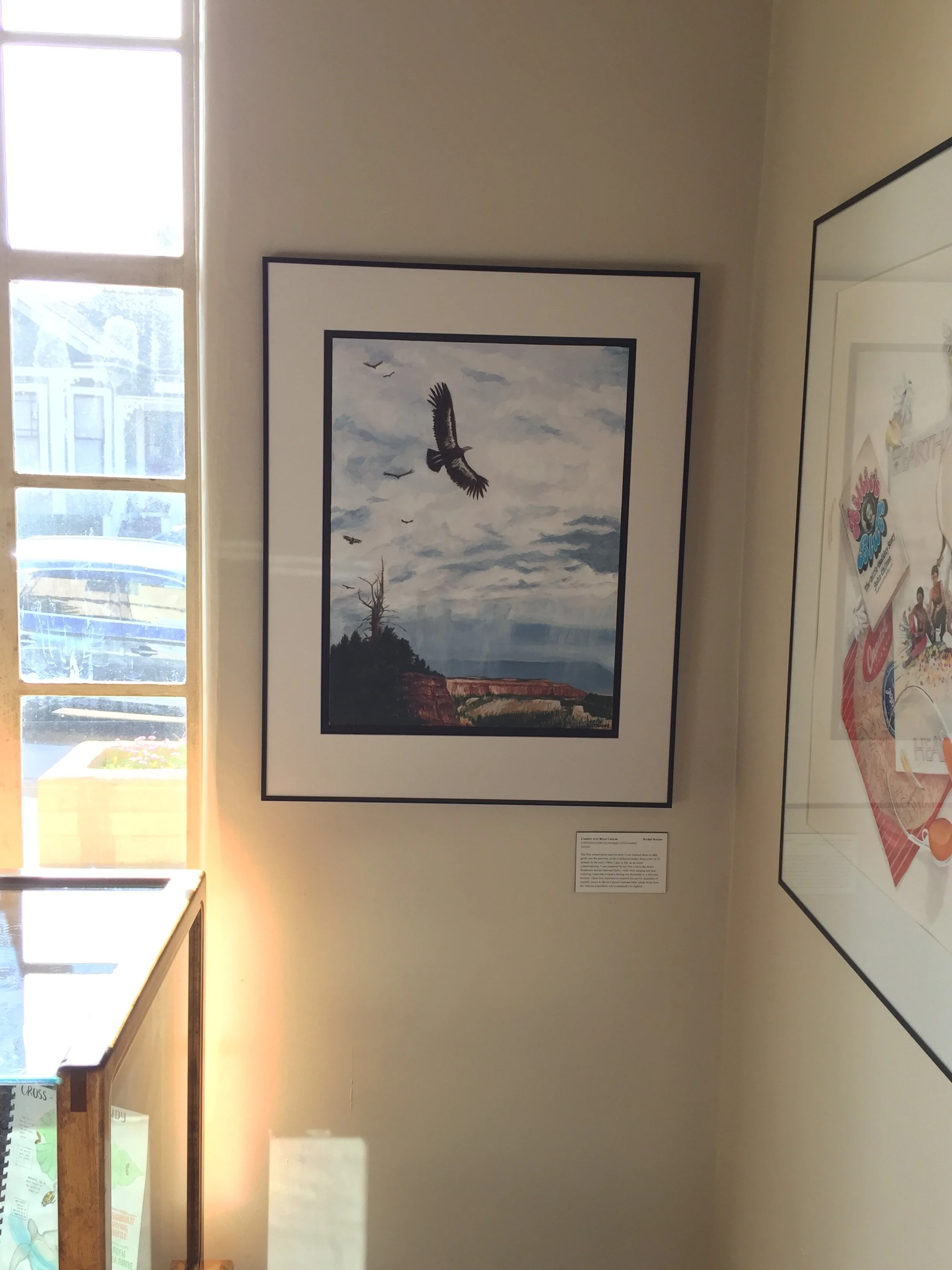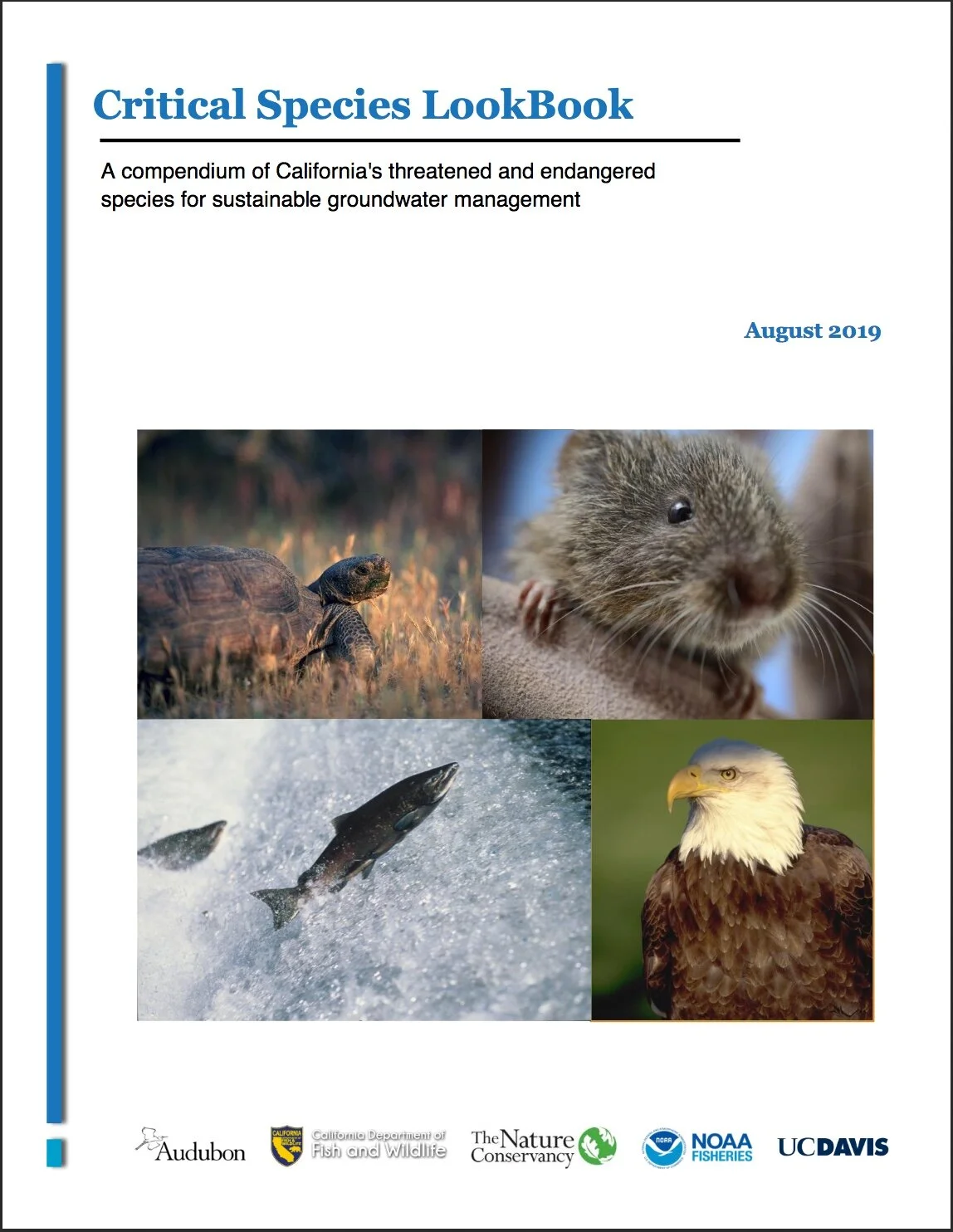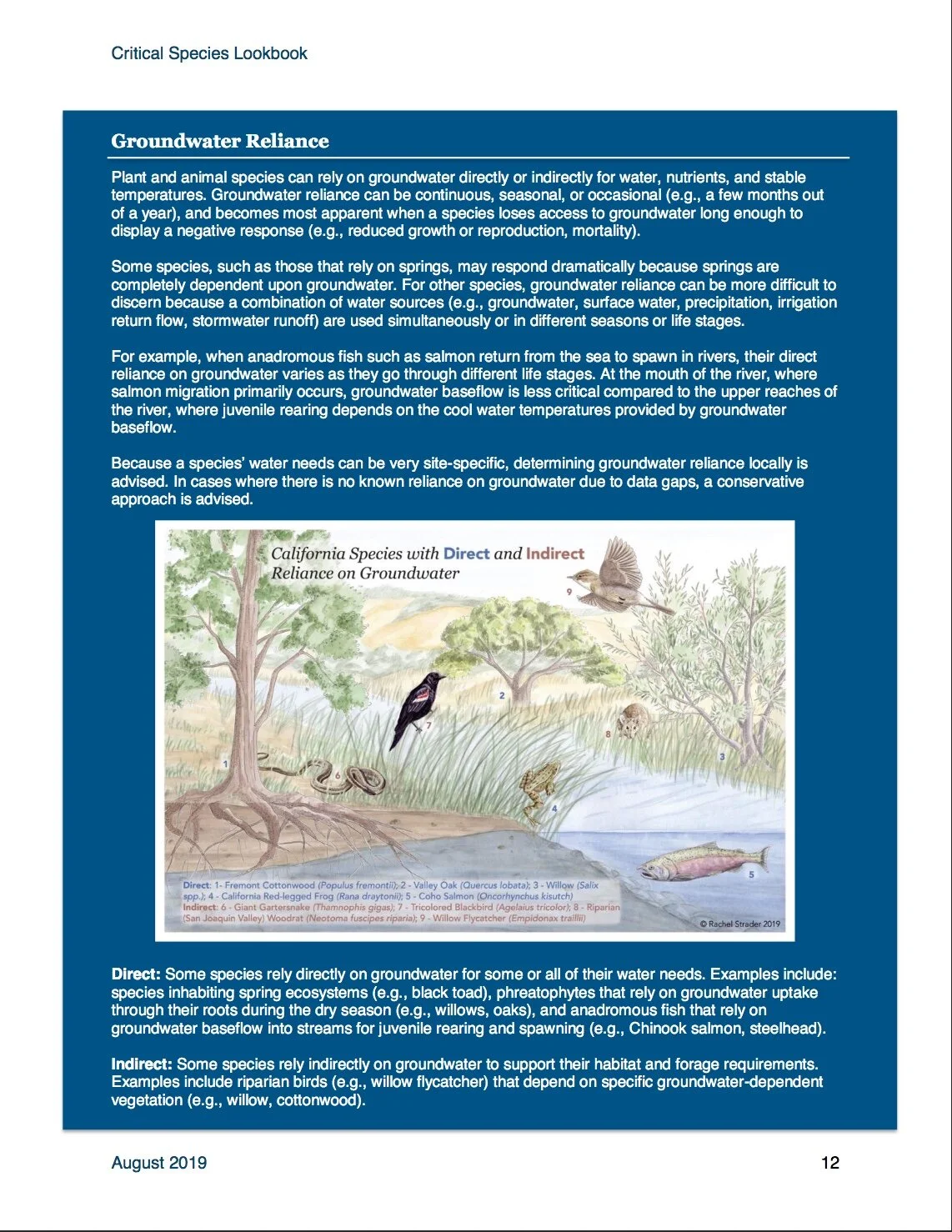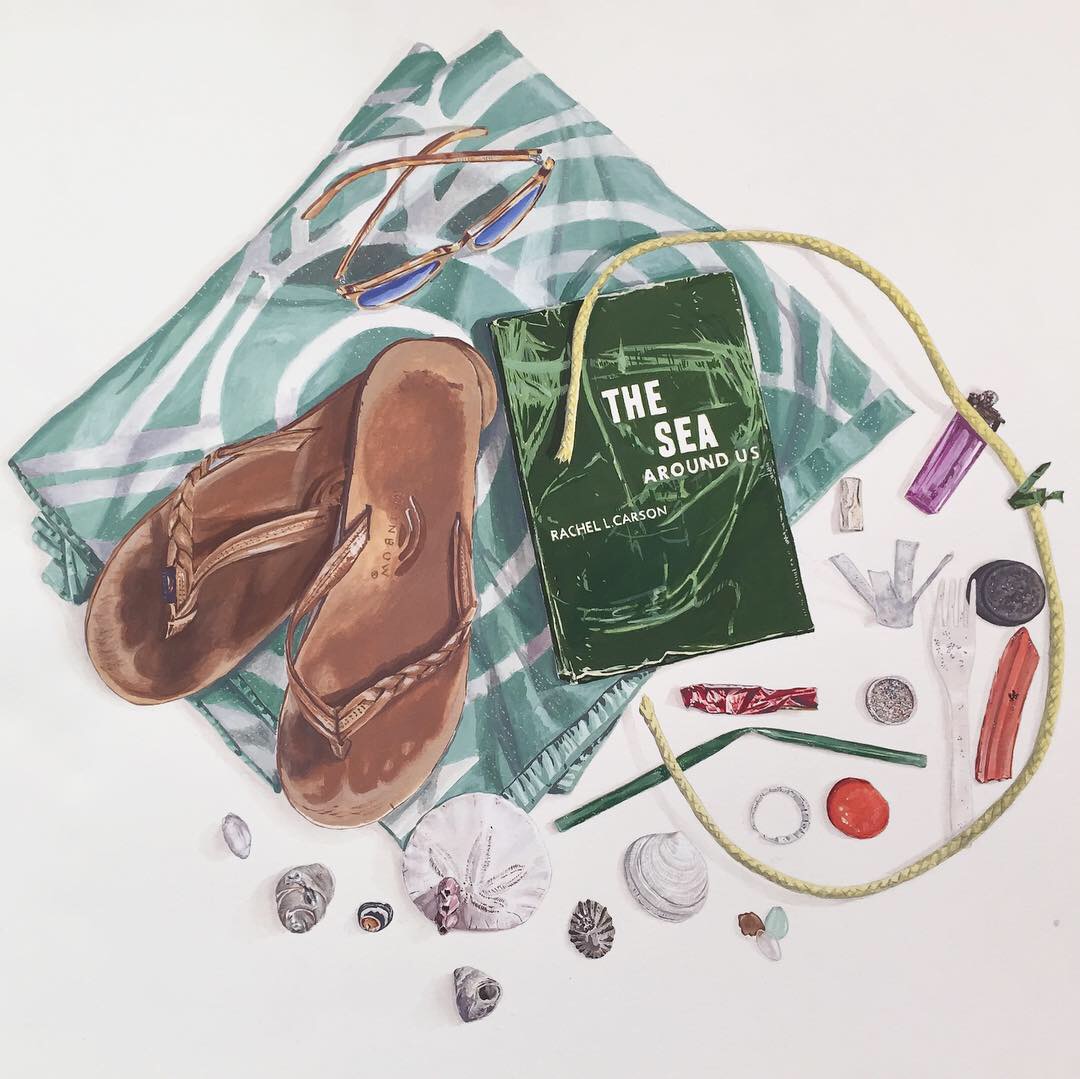I’m catching up on a lot of things as we all spend extra time at home. I wanted to share a bit about my second (big) mini-internship with Ink Dwell, upon my return from Hawaii in November.
Looking up at Jane’s vision and the InkDwell team’s work, with Amy Koehler. Photo by Deanna Derosia.
Ink Dwell was founded by one of my CSUMB professors, Jane Kim, who is a talented artist, and her husband Thayer Walker, a writer. They also happen to be my neighbors. Jane is perhaps best known for her mural work, including the Wall of Birds at Cornell Lab of Ornithology. Jane agreed to take on me and several of my CSUMB classmates in internships last year, since Ink Dwell had a flurry of projects lined up for the rest of 2019.
When I was due to return home from Hawaii, I had a couple of other art and consulting projects lined up, so I was only available about a day a week to help out. I fully expected to be doing studio work at Ink Dwell’s Half Moon Bay location. But my last week in Honolulu, I called Thayer and Jane and they let me know they really needed more help on their 11-story mural of native butterfly species in the Tenderloin. Having never worked on a mural before, and actually not really sure if I was scared of heights, I asked, “Can I start from the bottom up?” The answer was, unfortunately (or perhaps fortunately), no. To access the wall we had to climb from the roof into a swing stage, then get lowered down. And most murals are done from the top down, to avoid paint splatters.
At my first test run/safety session at 455 Hyde Street—to see if I could handle it—I was definitely a bit nervous. But once I was on the wall, I kind of forgot how high I was. It was almost like a combination sport and art—a full-body, physically demanding experience. Jane had the whole design and color worked out, so our work as interns was to help freehand the linework, in a grid pattern they had laid out, code the shapes by color number, and eventually, paint them. Way up high, we often had visits from the area’s resident Red-tailed Hawks, and bees who liked to land on the colorful flowers; and we could watch fog and weather sweep across the City.
I learned a lot by watching Jane, which details she pays attention to and where to be looser; her incredible sense of color; and how to see how a full image fits together when you are only looking at a piece of it from a few inches away (looking sideways helps!). It was clear her work is derived directly from a passion for nature.
As I mentioned, I was only helping Jane and the team out once a week, and only on the South Wall—so my role in this whole impressive endeavor was quite small. But jumping into a project in progress, feet first and from the roof, I learned my limits are often farther than I think they are. And every time I drive by the beautiful mural in the Tenderloin, I’ll be proud to say which antennae and wings I played a part in painting, helping people learn about and appreciate all the nature around us in this incredible city.
I’ve attached a few photos here from my short time on the mural. And here’s an interview Jane did with Outside Magazine about this project and her larger body of work highlighting the plight of Monarchs: https://www.outsideonline.com/2409019/monarch-butterfly-conservation-jane-kim


























